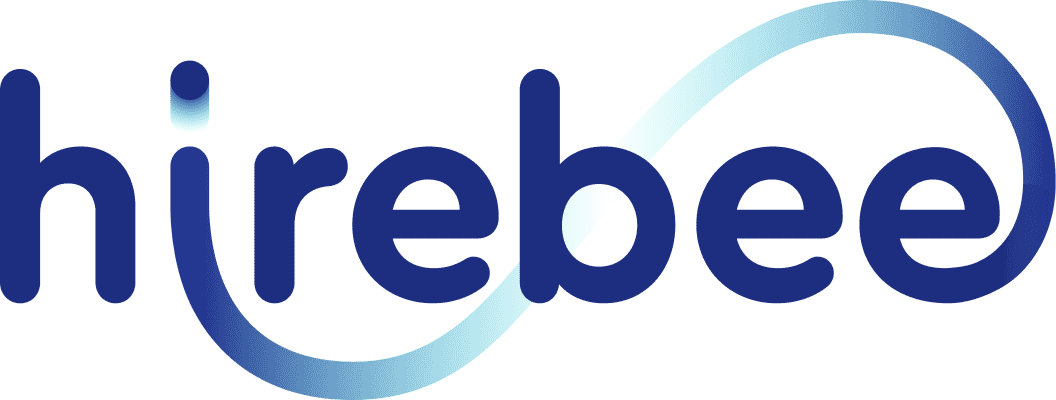Table of Contents
ToggleWhat is Candidate Screening?
Candidate screening is a crucial step in the hiring process that helps recruiters identify the most qualified candidates from a pool of applicants. It involves assessing resumes, conducting initial interviews, and using various methods for screening candidates to ensure they meet the job requirements. The goal is to filter out unqualified applicants early on, saving time and resources while improving the quality of hires.
A well-structured screening process for hiring can include automated resume screening, skill assessments, structured interviews, and background checks. By using a combination of these techniques, recruiters can make more informed decisions and ensure that only the most suitable candidates move forward in the hiring process. This not only streamlines recruitment but also enhances the chances of finding the right talent for the role.
The guide will delve into the different types of screening tests, such as cognitive ability assessments, personality evaluations, technical skills tests, and situational judgment scenarios. It will explore the critical aspects of test preparation, including defining job requirements, selecting appropriate tools, and ensuring legal compliance and ethical considerations. Additionally, the guide will address the importance of maintaining fairness, diversity, and candidate experience throughout the screening process.
Methods of Candidate Screening for Hiring
Candidate screening is a multi-step process that ensures only the most qualified individuals proceed in the hiring journey. Employers use various techniques to evaluate applicants based on job requirements, skills, and cultural fit. Effective screening in recruitment reduces the risk of hiring mismatches and enhances overall recruitment efficiency.
Preparing for the Screening Tests
Before implementing screening tests, it’s essential to establish a structured approach. A well-defined screening process for hiring improves accuracy and fairness while ensuring compliance with industry regulations. The following steps help organizations prepare effectively.
Define Job Requirements and Essential Skills
Before designing any screening test, it’s crucial to have a clear understanding of the job role and the specific skills and attributes required for success in that role. Work closely with the hiring managers and team members to identify the essential qualifications, competencies, and experience needed. This will serve as a foundation for tailoring the screening tests to the job’s unique demands.
Determine the Types of Screening Tests Needed
Different roles require different evaluation methods. Some positions demand technical assessments, while others may benefit from personality or cognitive ability tests. Recruiters should select screening methods that best measure a candidate’s suitability for the role, ensuring an efficient hiring process. Consider the following categories:
- Cognitive Ability Tests: Assess a candidate’s problem-solving, critical thinking, and decision-making skills. These tests can include numerical, verbal, and logical reasoning assessments.
- Personality Assessments: Evaluate a candidate’s behavioral traits, work style, and compatibility with the company culture. Personality assessments can provide insights into how an individual might perform in a team environment.
- Technical Skills Assessments: Focus on evaluating specific technical skills required for the job. These assessments can include coding challenges, software proficiency tests, or industry-specific exams.
- Situational Judgment Tests: Measure a candidate’s ability to handle real-life work situations and make appropriate decisions. These tests assess a candidate’s problem-solving abilities within a job context.
Select Appropriate Screening Test Tools or Platforms
Once the types of screening tests are determined, research and choose reliable and reputable testing tools or platforms. Look for assessments with proven validity and reliability, and ensure they adhere to industry standards and best practices. Applicant tracking systems (ATS), candidate screening software, AI-powered screening tools, and skill assessment platforms help automate the process and improve hiring accuracy. Choosing the right platform ensures that test results are reliable and easy to interpret.
Obtain Legal and Ethical Considerations for Test Usage
It is essential to understand the legal and ethical guidelines surrounding the use of screening tests during the hiring process. Familiarize yourself with the employment laws and regulations in your region that pertain to testing job applicants. Ensure that the tests do not discriminate against any protected groups and are administered fairly and consistently.
By carefully preparing for the screening tests, recruiters can lay the groundwork for a robust and effective hiring process. Defining job requirements helps recruiters target the right skills, and selecting appropriate test types and tools ensures a well-rounded evaluation of candidates. Remaining mindful of legal and ethical considerations promotes fairness and diversity, leading to better hiring decisions and a more inclusive workforce.
Designing Effective Screening Tests
Creating well-structured screening tests is essential for accurately assessing candidates’ skills and qualifications. A well-designed test ensures fairness, improves hiring efficiency, and enhances the screening process for hiring by identifying top talent effectively. The following factors contribute to the development of reliable and efficient screening tests.
Ensuring Test Reliability and Validity
To ensure accuracy in recruitment screening, tests must consistently measure what they are intended to assess. Reliability refers to the consistency of test results over time, while validity ensures the test evaluates relevant skills and competencies. Using standardized testing methods and data-driven insights helps improve both factors.
- Reliability: The consistency and stability of test results should be high. Ensure that the test produces consistent outcomes when administered to the same candidate multiple times or when different raters evaluate the same responses.
- Validity: The test should measure what it intends to assess. Ensure that the screening test aligns with the specific job requirements and predicts job performance accurately.

Writing Clear and Unbiased Questions or Scenarios
A critical part of screening applicants is crafting test questions that are easy to understand and free from bias. Questions should focus on job-related skills, real-world scenarios, and objective criteria to assess candidates fairly. Avoiding overly complex or ambiguous wording ensures a smooth testing experience.
- Use language that is clear, concise, and easily understandable by all applicants. Avoid jargon or overly technical terms that may confuse candidates.
- Ensure that the questions or scenarios presented in the test are free from bias. Bias can lead to unfair advantages or disadvantages for certain groups of candidates and can result in less accurate assessments.
Implementing Time Limits and Test Conditions
Setting appropriate time constraints ensures that candidates complete the test efficiently without unnecessary stress. Time limits should align with the difficulty level of the assessment and reflect real-world job conditions. Additionally, maintaining standardized test environments helps provide fair evaluation conditions.
- Set appropriate time limits for each section of the screening test. Time constraints can help measure candidates’ ability to handle tasks efficiently, simulating real-world work scenarios.
- Consider the testing environment: Ensure that the test is administered in a distraction-free and standardized setting to maintain consistency in the assessment process.
Pilot Testing the Screening Tests
Before full implementation, pilot testing helps identify potential issues in test structure, difficulty, and fairness. Conducting trials with internal teams or a small group of applicants provides valuable insights for refining the test. Adjustments based on feedback improve the accuracy and effectiveness of candidate evaluations.
- Before administering the screening tests to all candidates, conduct pilot testing with a small group of individuals who represent the candidate pool. Pilot testing helps identify potential issues with the test design, wording, or scoring rubric.
- Gather feedback from the pilot group and use it to refine the screening test, ensuring its effectiveness and fairness.
Addressing Different Types of Screening Tests
Different jobs require different types of tests. Selecting the right test type based on job-specific needs ensures a well-rounded evaluation of candidates. A diverse approach to testing enhances the overall screening in the recruitment process.
By taking these considerations into account, recruiters can design screening tests that are reliable, valid, fair, and effective in identifying the most qualified candidates for the job. Remember to continuously review and refine the screening tests based on feedback and performance data to optimize the recruitment process continually.
Administering Screening Tests
Proper administration of screening tests ensures a smooth and fair assessment process. Employers must establish clear guidelines, maintain security, and provide accessibility to ensure a seamless screening process for hiring. By implementing structured procedures, organizations can enhance candidate experience while maintaining test integrity.
Informing Applicants about the Screening Process
Transparency is key when screening job applicants. Employers should communicate test details, expectations, and evaluation criteria in advance. Providing candidates with clear instructions and timelines helps them prepare effectively and reduces anxiety, leading to a more accurate assessment of their skills.
- Transparent Communication: From the outset of the recruitment process, provide applicants with clear and detailed information about the screening tests they will undergo. Explain the purpose of each test, the specific skills or attributes being assessed, and how the results will be used in the hiring decision.
- Timelines: Communicate the screening test schedule to candidates, including any deadlines they must adhere to. This helps applicants plan their preparation and participation accordingly.
Setting up a Secure and Accessible Testing Environment
To ensure fairness in recruitment screening, tests must be conducted in a controlled and accessible setting. Whether administered online or in person, security measures like proctoring, identity verification, and encrypted test platforms prevent unauthorized access and protect test integrity.
- Data Security and Privacy: Ensure that the screening test platform or tools used adhere to industry-standard data security and privacy protocols. Protect applicants’ personal information and ensure that the results are only accessible to authorized personnel.
- Accessibility: Accommodate applicants with disabilities or specific needs, such as providing alternative formats for candidates who require them. Make sure the testing platform is accessible to all applicants to maintain a fair and inclusive process.
Accommodating Candidates with Disabilities or Special Needs
An inclusive hiring process ensures all candidates have equal opportunities. Making adjustments as needed aligns with ethical hiring standards and improves diversity in recruitment.
- Requesting Accommodation: Encourage applicants to inform the recruitment team about any disabilities or special needs that may require accommodation during the screening tests. Respect the candidate’s privacy and only share this information with those involved in the accommodation process.
- Reasonable Accommodations: Provide reasonable accommodations that do not compromise the integrity or purpose of the screening tests. Collaborate with the candidate to identify suitable solutions.
Dealing with Potential Cheating or Dishonesty
To maintain credibility in the screening process for hiring, organizations must implement safeguards against cheating. Online tests can include AI-based monitoring, randomized question orders, or webcam proctoring, while in-person assessments can use strict supervision. Clearly stating consequences for dishonest behavior deters misconduct and ensures fair evaluation.
- Test Integrity Measures: Implement measures to prevent cheating, such as randomizing test questions, disabling copy-paste functions, or using remote proctoring solutions.
- Communicate Test Policies: Clearly state the expectations for honesty and integrity in the screening process. Inform candidates about the consequences of dishonest behavior, which may include disqualification from the recruitment process.
- Flagging and Reviewing Suspicious Behavior: Monitor test sessions for any suspicious behavior and flag instances of potential cheating. Review flagged cases carefully and, if necessary, follow up with the candidate for clarification.
Administering screening tests efficiently and professionally not only helps identify the best-suited candidates but also reflects positively on the company’s reputation and candidate experience. Treating candidates with respect and fairness throughout the screening process will foster a positive impression of the organization, regardless of the final hiring decision. It is essential to maintain clear communication channels and uphold the ethical principles of fairness and integrity at all stages of the screening process.
Evaluating and Scoring Screening Tests
The evaluation and scoring of screening tests are critical steps in the recruitment process, as they help in identifying the most suitable candidates for the job. By setting clear grading criteria and benchmarking data, recruiters can objectively assess applicants’ performance and make informed decisions. Here are some essential considerations for effectively evaluating and scoring screening tests:
Defining the Scoring Rubric and Grading Criteria
Establishing a clear grading system is essential in the methods for screening candidates. Employers should define key performance indicators (KPIs) and weight different test sections based on job requirements. A structured rubric ensures that assessments remain objective and align with hiring goals.
- Establish Clear Metrics: Define specific performance metrics for each screening test. For cognitive ability tests, it might include accuracy, speed, and overall score. For personality assessments, look for traits relevant to the job and establish rating scales accordingly.
- Weightage: Determine the importance of each screening test in the overall evaluation process. Some tests may carry more weight than others, depending on their relevance to the job role.

Standardizing the Scoring Process
To maintain accuracy in the screening test for a job, companies should adopt a uniform scoring approach. Automated scoring tools, peer reviews, and predefined answer keys help eliminate biases and improve the reliability of evaluations. Standardization ensures consistency when comparing candidates.
- Consistency: Ensure consistent evaluation by providing clear instructions to test administrators or scorers. Establish guidelines for assessing subjective tests like situational judgment tests to maintain uniformity.
- Multiple Scorers: If more than one person is involved in scoring, conduct regular calibration sessions to minimize scoring discrepancies and biases.
Identifying Cutoff Scores for Each Test
Setting minimum passing scores helps recruiters filter out unqualified candidates efficiently. A data-driven approach ensures that the selection process remains both fair and effective.
- Set Thresholds: Determine minimum acceptable scores for each screening test. Cutoff scores should align with the job requirements and provide a clear differentiator between candidates who move forward in the process and those who do not.
- Flexibility: Consider the possibility of adjusting cutoff scores based on the job market’s competitiveness and the organization’s hiring needs.
Tools for Candidate Screening
Leveraging technology in screening and evaluating candidates enhances efficiency and accuracy in recruitment. Modern hiring tools help streamline the screening process for hiring, reducing manual effort while improving decision-making. Below are some of the most effective tools used in candidate screening.
Applicant Tracking Systems (ATS)
An Applicant Tracking System (ATS) automates resume screening and helps recruiters organize candidate information. These systems use keyword matching and AI-driven analytics to rank applicants based on job requirements. By integrating an ATS into the recruitment screening process, hiring managers can quickly identify top candidates and streamline communication.
Automated Screening Tools
AI-powered screening tools analyze resumes, assess skills, and predict candidate success based on predefined criteria. These tools enhance methods for screening by reducing bias, improving efficiency, and ensuring consistency in evaluations. Automated tools help employers filter large applicant pools and focus on the most promising candidates.
Pre-Employment Testing Platforms
Pre-employment testing platforms offer a variety of assessments, including cognitive ability tests, personality evaluations, and technical skill exams. These platforms provide data-driven insights, making the screening test for a job more objective and reliable. By using these platforms, recruiters can ensure candidates meet role-specific requirements before proceeding to interviews.
Conclusion
In conclusion, implementing effective screening tests in the recruitment process is crucial for identifying the most qualified candidates. A well-designed and fair screening process can save valuable time, minimize biases, and lead to better hiring decisions. Recruiters must define job requirements, choose appropriate test types, and administer them ethically. Transparent communication with applicants and a positive candidate experience are equally important. Continuous feedback and improvement ensure the screening process remains up-to-date and effective. By following this practical guide, recruiters can enhance their ability to identify top talent, fostering a more productive and diverse workforce for the organization’s success.
Hirebee makes it a lot easier for you to source good candidates for your team using improved recruitment marketing software and better job distribution.









